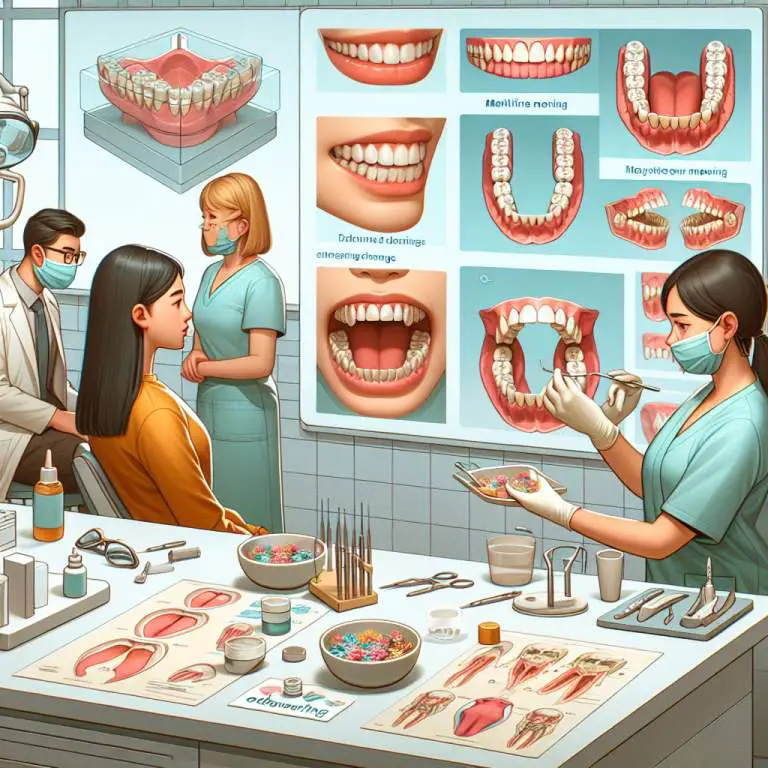Can mewing help with jawline enhancement post-weight loss?
Yes, mewing can help with jawline enhancement post-weight loss. This technique involves positioning the tongue against the roof of the mouth to potentially improve facial structure and define the jawline. People who have lost weight might find mewing beneficial as it can aid in tightening any loose skin around the jaw area, leading to a more defined appearance.

How does weight loss affect facial structure and jawline appearance?
When someone loses weight, it doesn’t just show on their body; their face changes too. This happens because as the fat decreases, features like the jawline become more visible. It’s like uncovering something that was hidden under a blanket.
This change can make a person’s face look sharper and more defined. For many people, this is a good thing because they feel it makes them look healthier and more attractive. The jawline, in particular, becomes more noticeable, giving the face a stronger shape.
Can mewing realistically alter the shape of your jawline?
Mewing is a technique that some people believe can change the shape of your jawline over time. It involves placing your tongue in a specific position against the roof of your mouth. The idea is that by doing this regularly, you can influence how your jaw looks.
However, whether mewing can really make a big difference is up for debate. Some say they’ve seen changes, while others haven’t noticed much. It seems like it might work for some but not for everyone.
What are the principles behind mewing, and how do they work?
The main idea behind mewing is about proper tongue posture. The technique suggests that where you rest your tongue in your mouth can affect how your face and jaw develop. By keeping your tongue pressed against the roof of your mouth, you’re supposed to help shape your jawline better.
This method also talks about breathing through your nose instead of your mouth and keeping your lips together. These habits are thought to support better facial structure by encouraging the right kind of muscle use and development around the jaw area.
Is there scientific evidence supporting mewing’s effectiveness for jawline enhancement?
Finding solid scientific proof that mewing works exactly as claimed is hard. While there are theories about how it could help reshape the jawline due to muscle engagement and posture correction, concrete studies are limited.
Some experts argue that while good posture and oral habits are important for health reasons, expecting dramatic changes from mewing alone might not be realistic. They suggest that genetics play a significant role in determining facial structure, which might limit how much techniques like mewing can do.
| Aspect | Description | Benefits | Considerations |
|---|---|---|---|
| Mewing Basics | A technique involving the proper placement of the tongue against the roof of the mouth, promoting facial structure changes over time. | Potentially more defined jawline, improved breathing, better posture. | Results vary and can take a long time to become noticeable. |
| Starting Age | Can be started at any age, but younger individuals may notice changes more rapidly. | Flexibility in starting age. | Elder individuals may see slower progress. |
| Daily Practice | Consistency is key; involves keeping the tongue on the roof of the mouth as much as possible. | Better results with consistent practice. | May feel unnatural or uncomfortable at first. |
| Complementary Practices | Incorporating jaw exercises, proper nutrition, and hydration. | Enhances overall facial aesthetics and health. | Might require lifestyle adjustments and additional research. |
| Safety Considerations | No risk of harm when practiced correctly. | Potential for developing TMJ issues if done incorrectly. | |
| Limited scientific studies directly supporting mewing’s effectiveness. | Promotes awareness of oral posture’s impact on health. | Critical thinking and personal experimentation advised. |
What techniques are involved in proper mewing practice?
To practice mewing correctly, you need to understand its basic technique. It involves resting your entire tongue on the roof of your mouth. This position should be maintained while keeping your lips together and teeth slightly touching or close together. The key is to ensure that the back part of your tongue is also pressing against the roof of your mouth.
This might feel strange at first because many people are not used to this tongue position. To get it right, try saying the word “sing,” and at the end of the word, keep your tongue pressed against the upper palate. This exercise helps in understanding how to place the tongue properly for effective mewing.
How long does it take to see results from mewing for jawline enhancement?
The time it takes to see results from mewing can vary widely among individuals. Some people report noticing changes in a few months, while others may need a year or more to see visible improvements. Consistency is crucial when practicing mewing; it’s something that needs to be done all day, every day.
It’s important to manage expectations as well. While some may experience significant changes in their facial structure, others might notice more subtle improvements. Factors such as age, genetics, and how correctly one practices mewing can all influence the outcome.
Are there any risks or potential side effects associated with mewing?
Mewing is generally considered safe since it involves natural positioning of the tongue against the roof of the mouth. However, if done incorrectly, there could be potential risks or side effects. For instance, applying too much pressure with the tongue or forcing the jaw into an unnatural position could lead to discomfort or even pain over time.
Additionally, individuals who obsess over perfecting mewing might develop anxiety or stress related to their appearance. It’s essential to approach mewing as a gradual process and not expect immediate drastic changes.
Final Thoughts
Mewing has gained popularity as a technique for enhancing one’s jawline through proper tongue posture. While some have reported positive outcomes, it’s important to remember that results can vary greatly and may take time to become noticeable.
As with any self-improvement technique, practicing safely and setting realistic expectations are key. If you’re considering starting mewing, focus on learning the correct technique and be patient with your progress. Remember that individual differences play a significant role in how quickly and effectively you might see changes.







